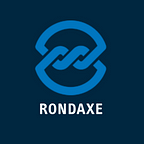Process Validation Protocol for Pharmaceuticals | Rondaxe CMC Consulting
“Process validation” is defined as the collecting and evaluating of information from the procedure planning stage through creation. This provides experimental assurance that the procedure’s ultimate result can fully supply a quality product to customers.
Process validation is currently recognized as a stringent requirement of Good Manufacturing Practices (GMPs) for finished medicines and for restorative medical devices. As a result, process validation applies to the manufacturing of pharmaceuticals and therapies and the creation of medical equipment. The process of pharmaceutical medication validation includes a series of actions during the manufacture of a particular product.
Process Validation Protocol for Pharmaceuticals
A rigorous process validation methodology is required to ensure that techniques are appropriately authorized. All proper process validation methods should have the following elements:
- The study’s goals and final scope
- All validation team members plus their credentials and duties
- The type of validation such as prospective, concurrent, retrospective and re-validation stage
- A complete inventory of every piece of equipment that will be utilized (as well as regular operating settings)
- All calibration criteria for all measurement instruments
- Probable dangers and precautions
- Steps of the procedure described in detail
- Sampling sites, techniques and strategies
- Statistical software for data analysis
- Methods of testing for completed products which have been validated
- All forms used to record outcomes
- Conclusions and findings which must be approved before use
Thus, the process validation protocol for pharmaceuticals is defined as a documented plan which contains everything from how the process will be carried out, to who will carry it out, and the parameters, sample plans and methodologies to be employed. Furthermore, it should always mention the equipment used, the specific number of batches that have been permitted for the research, specific criteria that must be satisfied, and who provides the ultimate conclusion of the method and products.
When a procedure is updated or changed after it has been approved, the right reasoning for the change must be documented. Furthermore, all individuals involved in directing the investigations should be appropriately prepared and qualified, since their actions might significantly impact the character of the output. This is because all data resulting from the research will be analyzed by these competent individuals against all criteria — and regarded as meeting or failing them.
Suppose an evaluation arises indicating that protocol requirements were not satisfied. In this case, the research should be deemed as having failed to demonstrate acceptability, and the reasons should be investigated and stored. Any failure to follow the procedure must be considered “compromising” and necessitates a thorough examination of all the implications for the study.
The final validation process confirmation should provide the established acknowledgment criteria, against which the final success or failure findings were assessed.
Conclusion
Process validation methodology for pharmaceuticals is an important guide plan for pharmaceutical medication quality objectives. These standards and extensive investigations are designed to provide high-quality items to people all around the globe.
More information on process validation protocol can be found online at rondaxe.com or by calling (315) 469–2800.
